On my last Montana trip I think I figured out part of the reason why Black-billed Magpies often perch high on power poles in some areas. I’m sure this apparent behavior is known to others but it was something new for me.
But first some background.
(Some of these photos are graphic so proceed with caution if you have “sensitivities”…)
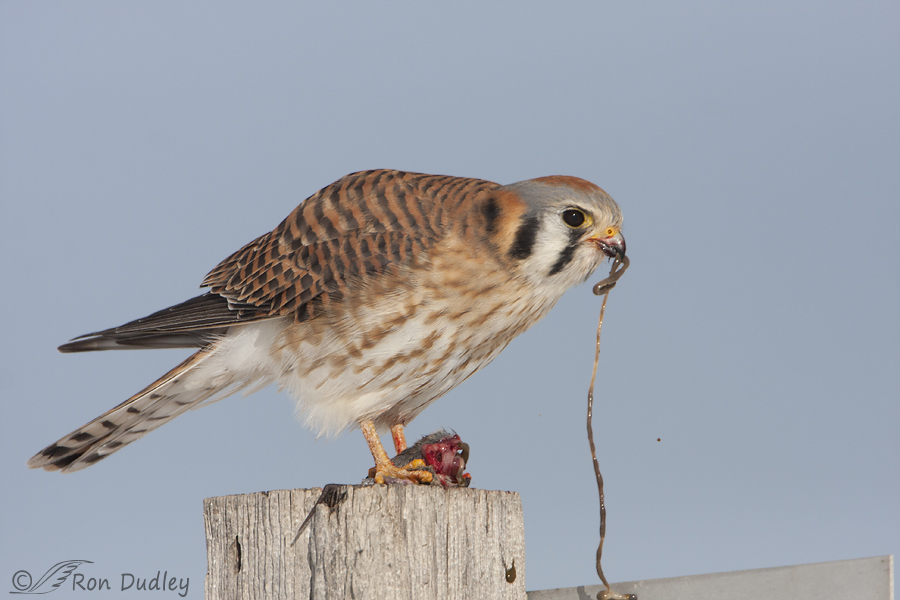
It’s a common (though not universal) practice for many raptors to reject the digestive tract of their prey – intestines in particular. It’s a behavior I’ve observed and photographed many times so I’ll provide several examples.
When this female American Kestrel reached the body cavity of the vole she was feeding on she very deliberately extracted the intestines…
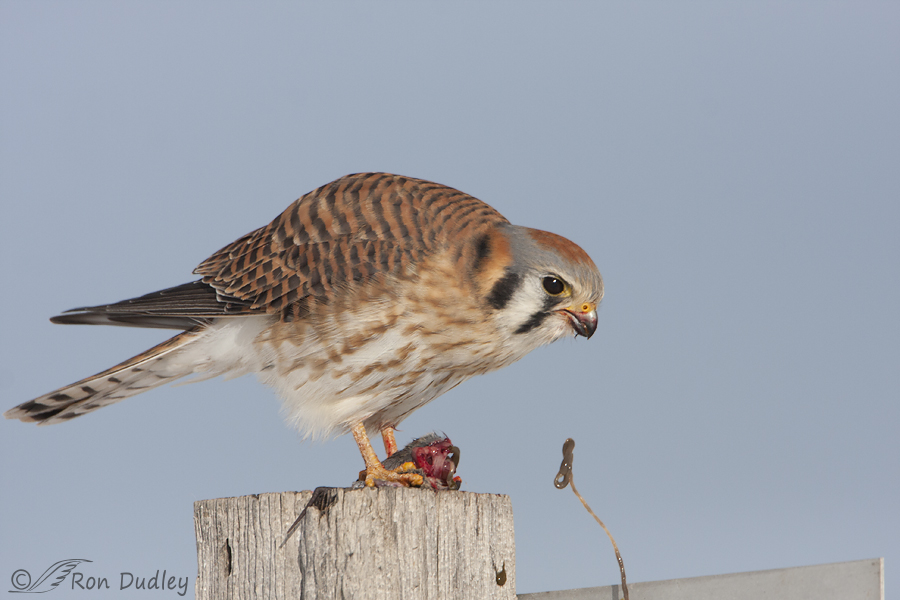
and dropped them to the ground before consuming the rest of the vole.
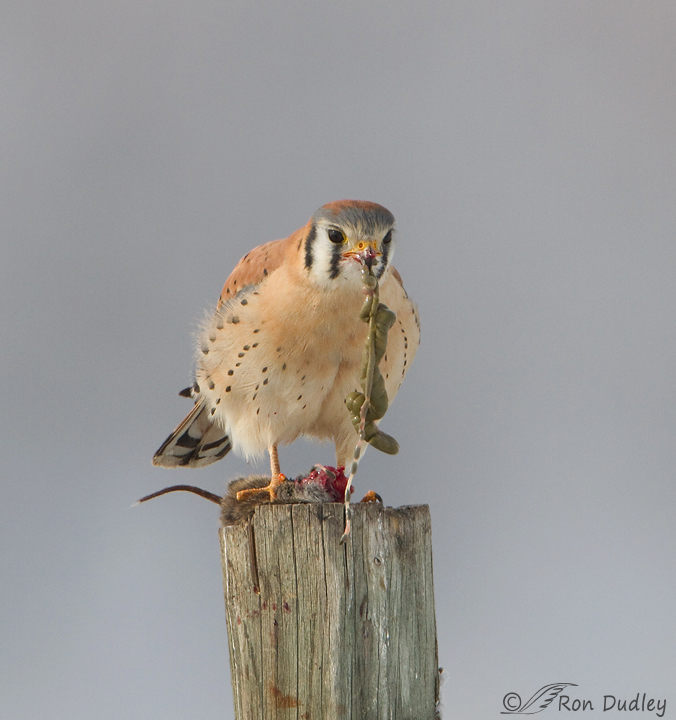
This kestrel did the same thing. Here it has removed the intestines and caecum (this time they’re extended with food)…
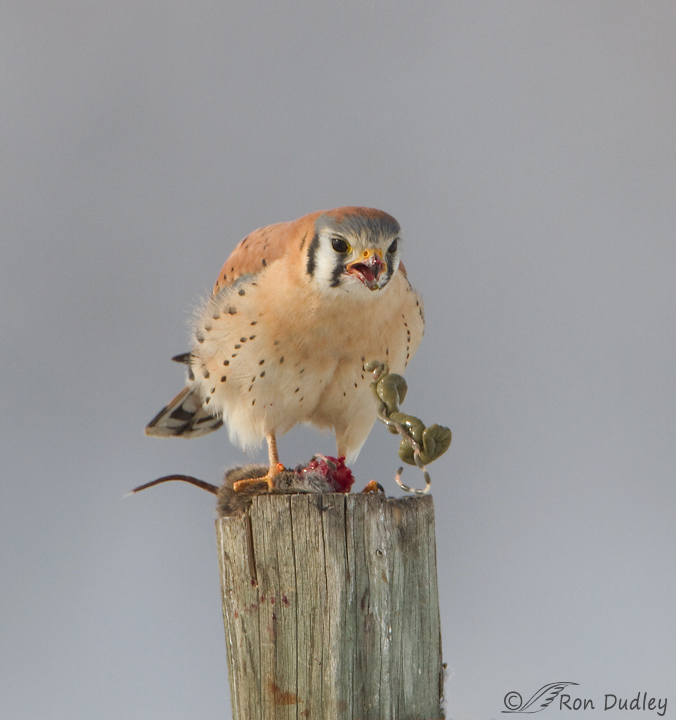
and flung them over the side of the post.
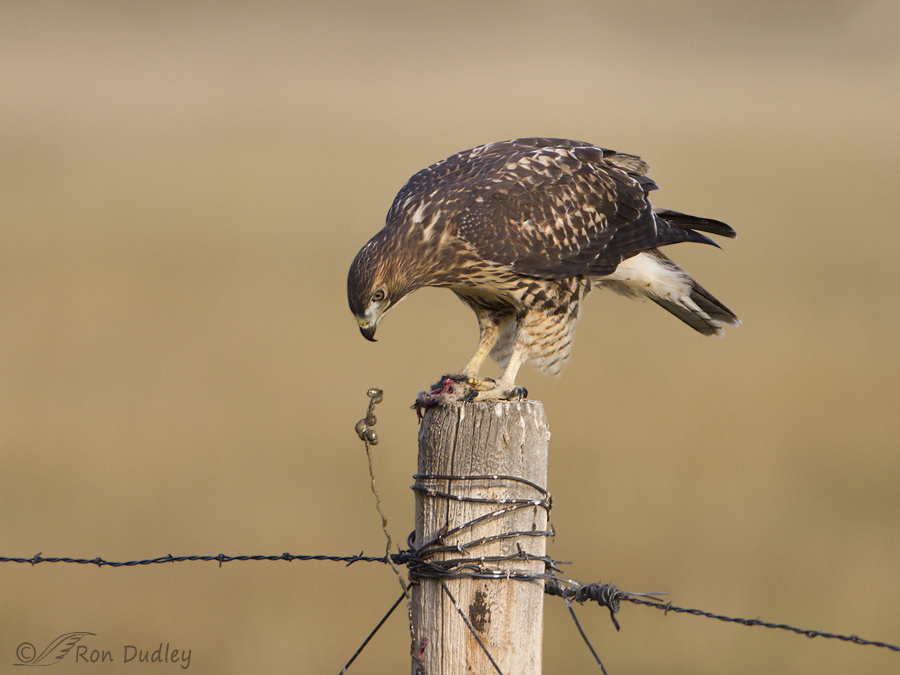
I’ve seen a variety of raptor species do the same thing. Here a juvenile Red-tailed Hawk has pulled away the large and small intestines of a rodent and is dropping them to the ground.
It’s common for rejected entrails to never make it to the ground. I’ve often seen them on top of posts and draped over the edge of other raptor perches.
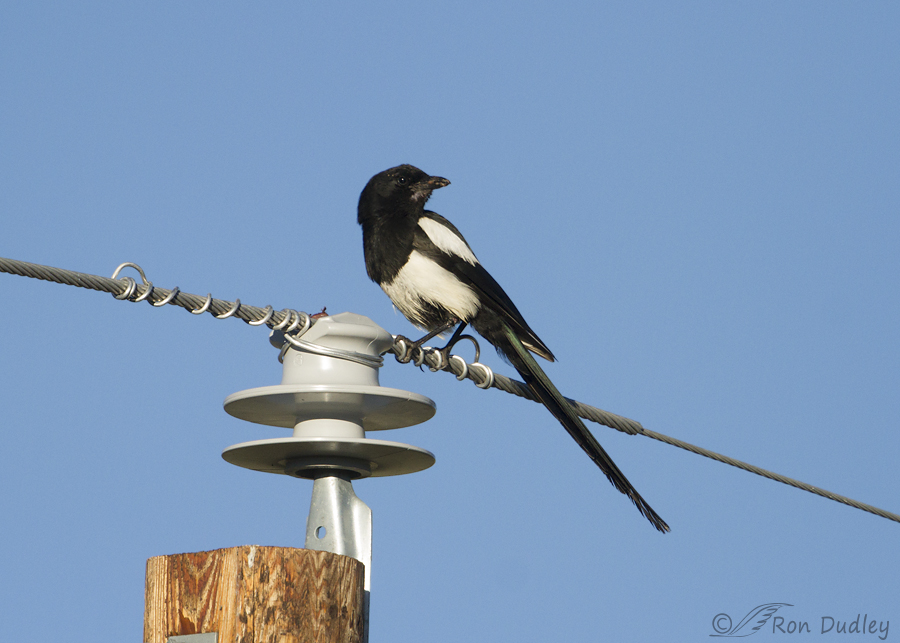
About three weeks ago, thinking I might get an interesting take-off shot, I stopped to watch this Black-billed Magpie perched high up on a power pole in the Centennial Valley of Montana. Just before I put my lens down and drove on down the road the magpie…
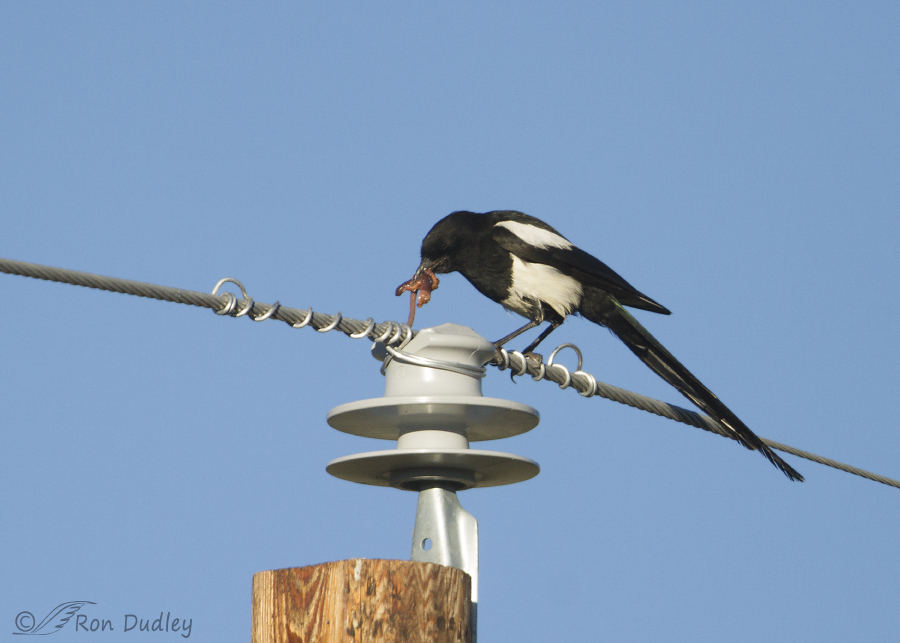
reached down to the top of the insulator and picked up a large gob of intestines I hadn’t noticed that had apparently been left on the pole by a raptor (Red-tailed Hawks, Swainson’s Hawks and a few others are relatively common in the area).
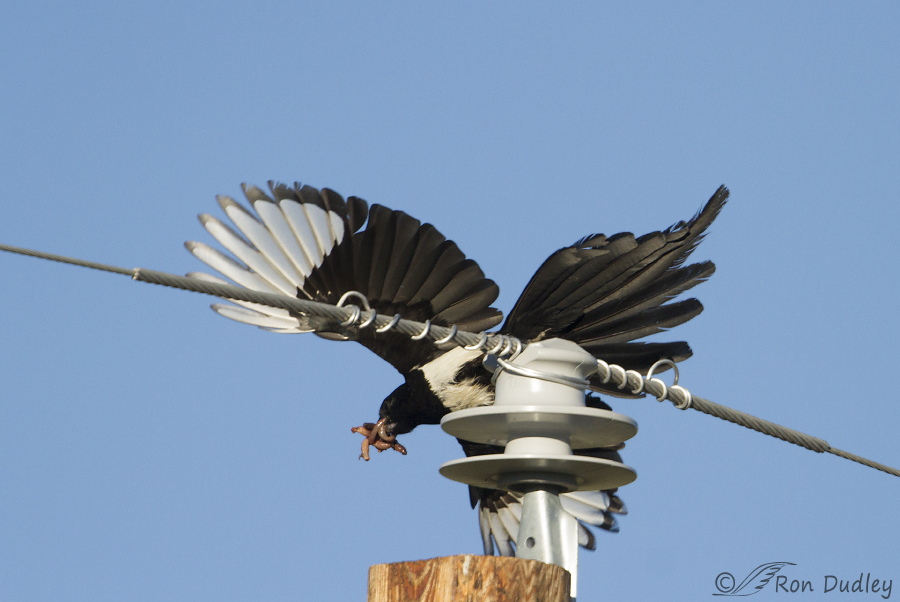
And then the magpie flew off with its prize.
In the years I’ve photographed raptors and magpies I’d never before put two and two together. Raptors often reject intestines. Magpies are opportunistic, omnivorous scavengers that I’ve often seen on the same perches commonly used by raptors. And magpies are corvids so they’re smart and they use both sight and scent to locate food. So I strongly suspect that individual birds learn to watch raptors feeding on perches and then move in later for possible rejected entrails.
This apparent behavior seems obvious to me now and I’m surprised that I hadn’t realized what was going on earlier. Sometimes I can be a little dense…
Ron


Observation shows us many thing! Not just for birds; for humans too. THANKS for helping us all learn!
Fantastic shots and really interesting information. I never knew that!
Charlotte
Fascinating! I certainly wouldn’t eat that. 😀
I do love that very little is wasted by birds or animals (other than us). And now I am wondering (again) why the raptors reject the intestines. Do you know?
And also whether if the season is a hard one they will eat them…
Remarkable the way nature works! Your photos and explanations are stunning, as always. Thank you!
That was so informative. Great shots to go along with your lesson. Terrific as always Ron. Thanks.
Thank you, Ellen.
Although a bit “strong” (I finished eating my lunch not long ago) I enjoyed learning from today’s lesson. Thank you. Great shots.
And I will try to find that book. Seems interesting.(Thank you Alison)
Thanks, Jorge. I always try to remember to give a warning early on in my post if there’s graphic content to follow. That kind of thing doesn’t bother me in the least (as long as it isn’t gratuitous) but I know that some folks really don’t appreciate it (especially during or just after a meal…)
I always learn something from you–even if I don’t comment. If it’s not behavioral, it’s technical or artistic. Often, just by looking at your images I come away with lessons about seeing, studying, observing.
Thanks very much, Sharon. Your comment gave this old retired teacher the warm fuzzies…
Fascinating sequence, Ron – thanks! By the way, you inspired me to read up on birds, and I recently listened to an audiobook version of “Bird Sense – What It’s Like to Be a Bird” by Tim Birkhead. Very eye-opening for me!
Among the issues discussed is scientists’ ‘premature’ conclusion that few birds have senses of smell in prior decades. In fact, a series of tests were described that demonstrated how some birds smell earthworms beneath the earth, always selecting the pail with worms over the pail of dirt without worms. I recommend the book for anyone who would like to learn more about the varying visual, auditory and olfactory capabilities of birds, along with their ability to ‘see’ magnetic fields.
Excellent comment, Alison. Someone else recommended that book to me a few months ago and I meant to pick it up and then it slipped my mind. Thanks very much for the reminder.
I learned something today. I was always told that a turkey vulture is the only bird with a sense of smell. I didn’t realize corvids could smell also. Interesting!
I thought it was interesting too, Mark. BNA says that they “apparently” use both sight and smell to recover their food caches and field tests seem to confirm it. Their brain olfactory bulb is “relatively large for a bird”.
Most birds actually have some sense of smell, it just varies widely in sensitivity and importance. There was a fascinating article on this very subject in a recent Audubon magazine.